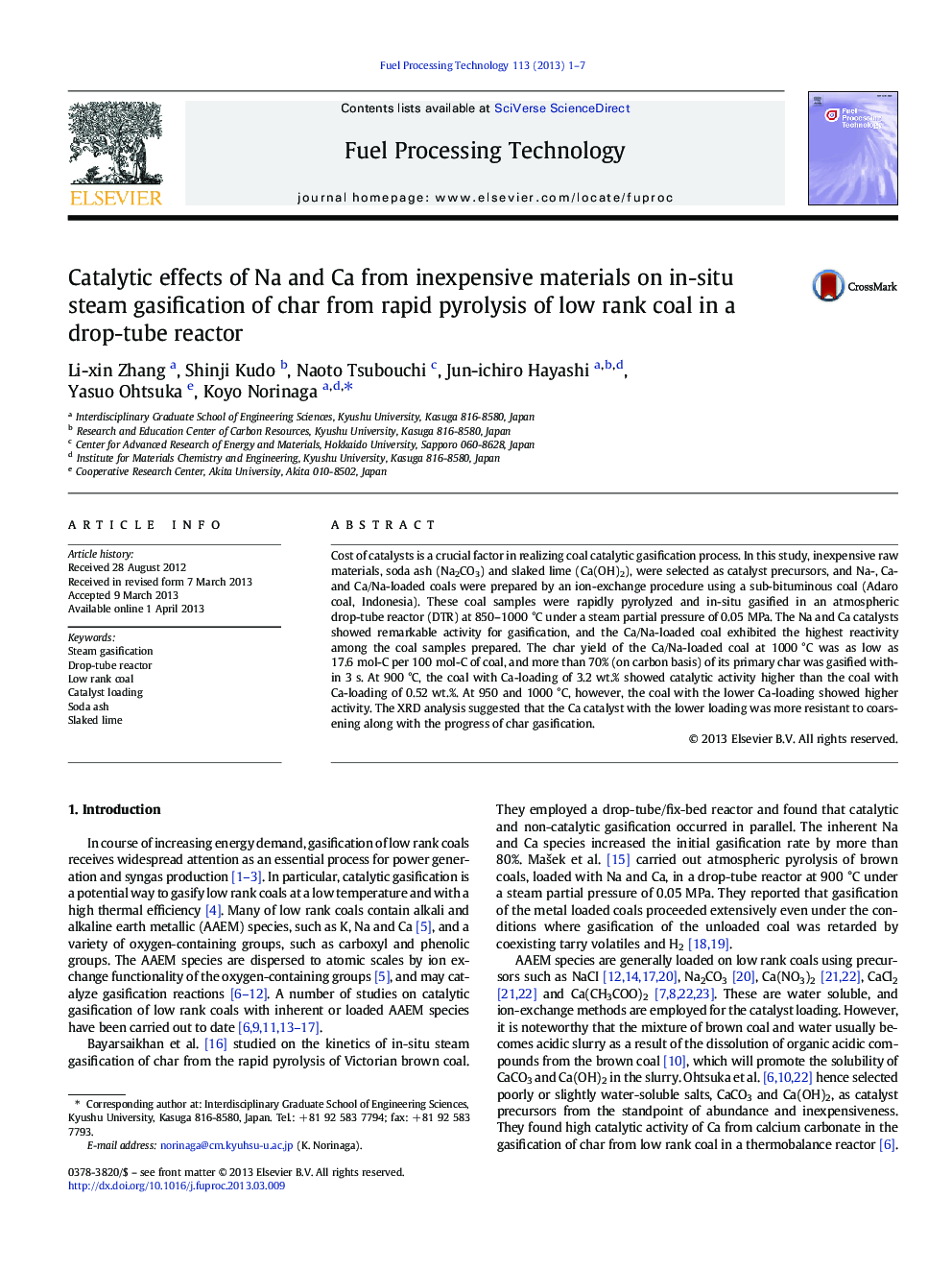| Article ID | Journal | Published Year | Pages | File Type |
|---|---|---|---|---|
| 210008 | Fuel Processing Technology | 2013 | 7 Pages |
•Inexpensive materials, soda ash and slaked lime, were chosen as catalyst precursors.•A drop-tube reactor was used to realize in-situ steam gasification conditions.•Na and Ca derived from low cost materials showed high activity for gasification.•Excess Ca loading caused coarsening of catalytic particles significantly.•Ca and Na co-loading coal exhibited the highest reactivity among prepared samples.
Cost of catalysts is a crucial factor in realizing coal catalytic gasification process. In this study, inexpensive raw materials, soda ash (Na2CO3) and slaked lime (Ca(OH)2), were selected as catalyst precursors, and Na-, Ca- and Ca/Na-loaded coals were prepared by an ion-exchange procedure using a sub-bituminous coal (Adaro coal, Indonesia). These coal samples were rapidly pyrolyzed and in-situ gasified in an atmospheric drop-tube reactor (DTR) at 850–1000 °C under a steam partial pressure of 0.05 MPa. The Na and Ca catalysts showed remarkable activity for gasification, and the Ca/Na-loaded coal exhibited the highest reactivity among the coal samples prepared. The char yield of the Ca/Na-loaded coal at 1000 °C was as low as 17.6 mol-C per 100 mol-C of coal, and more than 70% (on carbon basis) of its primary char was gasified within 3 s. At 900 °C, the coal with Ca-loading of 3.2 wt.% showed catalytic activity higher than the coal with Ca-loading of 0.52 wt.%. At 950 and 1000 °C, however, the coal with the lower Ca-loading showed higher activity. The XRD analysis suggested that the Ca catalyst with the lower loading was more resistant to coarsening along with the progress of char gasification.
